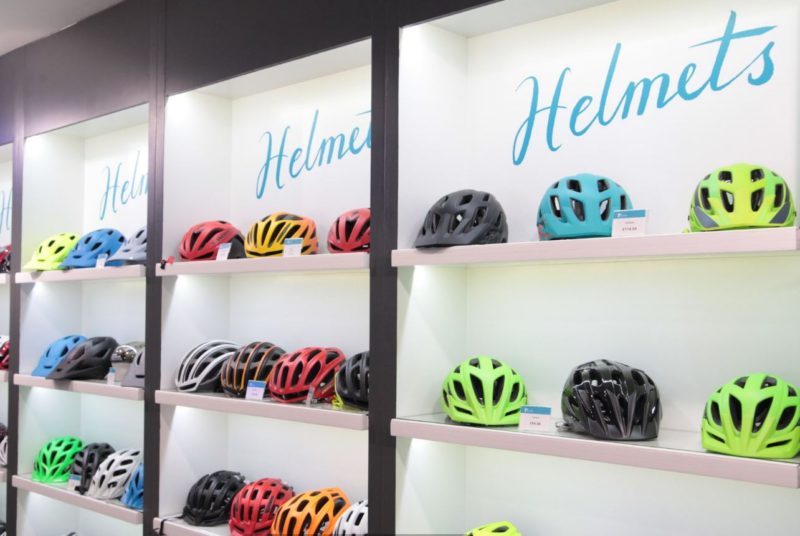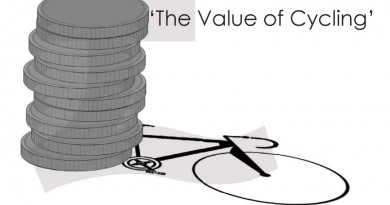Townley: If you want a profitable bike shop don’t be shy when it comes to scrutinising contracts
By Jay Townley, CyclingIndustry.News columnist and partner in the Gluskin Townley Group. 
There is no doubt the bicycle business is going through difficult times and this article is the second in a series intended to help explain the turbulence and help bike shop owners and managers to not only survive, but ultimately thrive deep into the future.
How can a bike shop survive and ultimately thrive? The answer is actually a series of changes in the form of interconnecting consumer and customer-focused initiatives, or actions that are within the reach, including the financial and the management power of just about every bike shop in America.
You already know that bike shops are not all the same, so each owner will have to move the initiatives and the opportunities around somewhat differently, depending on where the business is today and what the financial and retail merchandising situation is.
This is well worth repeating; the first thing you need to do is sit down in a quiet place, with no interruptions and decide what you want. I am taking this directly from Marie Forleo (www.marieforleo.com) and I highly recommend you visit Marie’s website and take her advice about deciding what you want for your bike shop business.
Whatever you decide, write it down because, as Marie says, clarity equals power. The clearer you are about what you want your bike shop to be, the easier it is going to be to communicate your bike shop’s mission and your vision to your managers, employees and your customers – and to yourself.
Don’t try to be all things to all people. Ask your customers what they want from your bike shop and focus on delivering the experiences and lifestyle solutions your customers want from you – not what you or your managers or staff want.
Next – sort out the brutal truths and determine which ones are holding your business back and restricting your ability to generate a real and fair profit – and jettison them.
Start with pulling out the copies of the dealer agreements that you have signed with your bicycle brands. If you don’t have a copy ask your sales rep to provide you with one.
Read the agreements and if you need any clarifications ask the brand, and most importantly, question any clause that, in your judgment, isn’t beneficial to your business. Getting the opinion of an attorney or financial advisor will be up to you and your budget, but make sure any authorized agreements you have signed are fair to your business and will help you make a fair profit – or plan for a future without them and prepare a calendar for sending a proper notice of termination.
Before you panic, at last count there were slightly over 140 individual brands of bicycles available to U.S. bike shops, plus local builders and brands, new crowd funded start-ups and don’t overlook the locally-made option.
Next – do an internal audit to make sure your bike shop is making a fair gross margin of profit on the sale of new bicycles. 
New bicycles are 47 to 50 percent of the total annual revenue [1] of the typical American bike shop. When this data was analyzed it clearly showed that over the last 15-years the typical American bike shop has not made a net pre-tax profit on the sale of new bicycles [2].
If your bike shop is the exception, congratulations. If your bike shop is among the vast majority that have not, or are not making a fair profit on the sale of new bicycles – stop it.
Remember, your bike shop is the brand in your neighborhood and community, and you have the local branding power to sell only those new bicycle products that provide your business with a fair retail profit.
Also, don’t forget about used bicycles, and the profit to be made on the variety of ways bike shops can provide and sell used bicycles in their local market space.
Next – focus on GMROI. Gross margin return on inventory is a key financial metric that you have to learn all about as quickly as you can. Why? The typical American bike shop is realizing slightly over 2 inventory turns on new bicycles and around 3 on total inventory [3].
Other retail channels are realizing 4, 5 and 6 or more inventory turns on total store inventory, and every additional turn results in additional profit and increases GMROI.
Increasing your bike shops inventory turn and GMROI starts with selecting and working with brands and suppliers that are as interested in your shop making a fair profit as they are in making a profit for their businesses.
Ordering and receiving merchandise more frequently and no less than 5 or 6 times or more per year at landed costs that allow your bike shop to make a fair profit is the place to start, and you can streamline this purchasing and merchandising process by utilizing the purchasing and inventory management modules that are available from your Point Of Sale (POS) provider.
Next, dismantle the tyranny of choice in your bike shop. Over several decades the bike shop channel of trade has promoted and accepted as conventional wisdom that consumers want a lot of choices – which results in too many choices and confused shoppers, who too frequently leave a bike shop without purchasing.
It is not up to the brands or their reps to do your bike shop merchandising for you – unless they will help you install a good-better-best system.
For every new bicycle model, helmet or rack – it doesn’t matter because the principal is the same. Look at the models in a category and select a good opening price point model, and a better model with a logical step up in features and retail pricing, and finally select a best model with logical and additional step up features and top of the category retail price.

Make it easy for shoppers to buy from you – and make it easy for your sales associates to sell to shoppers. Install a uniform step up retail sales methodology and continually train and educate, and reward your staff with an incentive system that consistently sells-up.
Don’t forget add-ons and including add-ons in your bike shop’s retail sales methodology and your training and education program – and your staff incentives.
Next, examine what it really means to be omni-channel. Remember, the consumer has been empowered by technology and they are in-charge of the retail economy, and they want experiences that give them 24-7 access to the retailers with whom they choose to do their business.
What this boils down to is a commerce enabled website for your bike shop. If your bike shop already has a website, but you are not selling merchandise on your site, investigate providers and resources to take your website to the next level.
If you don’t now have a website please seriously consider including one in your next budget and business plan. Omni-Channel is a term that is often misused and misunderstood. What it means is a seamless electronic extension of your brick-n-mortar bike shop.
Your physical store and your website should carry and feature the same merchandise and promotions. Furthermore, your customers should be able to shop and purchase from your bike shop, by accessing your website anytime, day or night, when they want to.
Next – focus on outrageously strong service and delivering extraordinary experiences and lifestyle solutions – thus creating customers for life. Scott Gross, the author of Totally Outrageous Service, wrote a very successful business book around his actual retail experience of providing POS, or Positively Outrageous Service: New & Easy Ways to Win Customers for Life!
Some of you may have read the book or experienced a live presentation by Scott over the years that he appeared at Interbike and NBDA gatherings.
What do you have to do to create Totally Outrageous shopping experiences?
Start with your bike shop management. In turn you and your managers can start with hiring-smart, starting with your hiring of your managers
Use online assessments as a part of your hiring process, and act on what they tell you – particularly about customer service naturals. Always conduct two or more interviews before making a job offer, and never hire on ‘gut-feel’.
The objective is hire people who want to provide outstanding customer service. Next train them on your retail systems, and educate about your store policies and operating procedures. Everyone has to be on the same page when it comes to customer service and what your employees are empowered to decide and to do to deliver a consistent level of outstanding and outrageous customer service.
It is hard, if not down-right impossible to provide a Totally Outrageous shopping experience if every manager and employee doesn’t know what you, the owner want, and what the rules of your retail store, both physical and online are.
The next article in this series will focus on the Blue Ocean Strategy: How to Create Uncontested Market Space and make your competition irrelevant based the 2004 book by W. Chan Kin and Renee Mauborgnie. A bike shop owner brought the Blue Ocean Strategy to our attention before the great recession, and it has proven to be an essential guide to making the transition from the old mainstream bike shop business to the new-wave fringe bike shop business, and from surviving to thriving.
Need some further inspiration? Check in with our recommendations of six books that will help drive your business forwards.
[1] 2016 NBDA Specialty Retail Channel Study
[2] Fred Clements: Are Bikes the Black Hole of IBD Profitability?
[3] NBDA Cost of Doing Business Study



